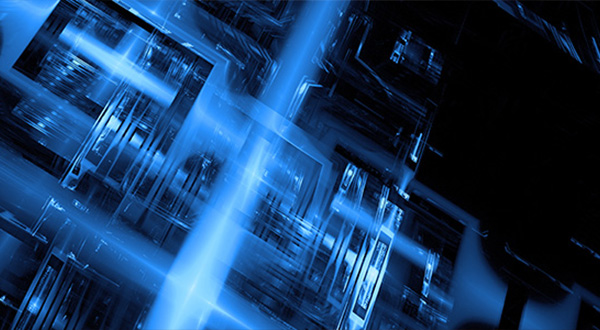2023 IoT trends & predictions
Experts predict that the global IoT market will eclipse $650 billion by 2026. This is the likely result when factoring in the growing consumer and commercial demands for IoT-connected products.
But how, exactly, will the IoT market grow in 2023 and beyond? What industries will spearhead this growth? And how are IoT products going to continue changing the world moving forward in both the private and public sectors?
This article will answer all of those questions and more by explaining the technology trends we’re observing in different industry verticals. If you want to learn about how we got to this point, check out the history of IoT.
As mobile networks improve, so does the reliability and performance of IoT devices
As mobile networks become faster and more reliable, the number of IoT devices connected to them will continue to grow. This means that more and more businesses and consumers will be able to take advantage of the benefits that come with deploying an IoT-connected device.
Improvements in business analytics
As more and more data becomes available to businesses deploying IoT, it empowers greater business insights. This improved information can inform a more effective business strategy, improving the chances of success.
Cybersecurity will become a major theme across the entire IoT industry
The interconnectivity of devices at home and in the workplace can drive a lot of value to families and organisations. But it also presents some new cybersecurity risks that we didn’t have to worry about in the past.
For starters, IoT devices present a new method by which harmful actors can breach broader networks. And because there are so many new IoT devices emerging from smaller, less established manufacturers, they also tend to have less frequent software updates. As a result, known vulnerabilities can take longer to fix if the right hardware isn’t put in place.
As more and more companies begin using IoT technology, security will likely become increasingly important throughout the industry. IoT manufacturers that emphasise security may become sought-after by commercial consumers, which could lead other players in the industry to adjust their practices in response to avoid falling behind.
Smart factories will become smarter
IoT devices are also likely to continue revolutionising the manufacturing industry in 2023 and beyond.
So-called smart factories use IoT sensors to identify issues with machinery and alert technicians when maintenance or a repair is required. The upshot is that with IoT, factories can identify and fix issues with machinery before those problems impact the wider manufacturing process.
Also, smart factories are starting to place IoT sensors on their work uniforms. These can help health and safety leaders get the full picture of a manufacturing facility’s working conditions at any given moment, allowing them to react before a workplace accident can occur. Examples of potential disasters could include temperatures getting too high or a gas leak in your employees’ vicinity.
Supply Chain Improvements with IoT
The Internet of Things (IoT) is revolutionising the way businesses operate, and when it comes to supply chain management, there is no exception. IoT technology has the potential to drastically improve supply chain operations by providing real-time data that can be used to make better decisions and optimise processes.
One of the most significant benefits of IoT in supply chain management is improved visibility. By connecting devices throughout the supply chain, businesses can gain a more comprehensive view of their operations. This allows them to identify potential supply chain issues before they become a bigger problem, and they can make changes to ensure good quality products are being delivered.
In addition, IoT technology can be used to automate processes such as inventory management and order fulfilment. This can help reduce costs and improve efficiency, resulting in a more streamlined supply chain.
The use of IoT in supply chain management is still relatively new, but it’s expected to become more widespread in the coming years. As businesses continue to embrace this technology, we can expect to see even greater improvements in supply chain operations.
Supply chain security will also be improved. All processes will be monitored from both a procedural point of view and also from a video surveillance stand point, thus preventing any tampering or issues within the manufacturing process.
Healthcare will drive public adoption of IoT technology
On the consumer side of things, we’re likely to see the healthcare industry continue spearheading the adoption of IoT technology.
Smartwatches from creators like Apple have become popular in recent years because they help people keep track of their health with ease. This focus on using IoT to drive healthier lifestyles may also find its way into healthcare facilities and hospitals.
For example, some studies suggest that lighting can play a role in the patient recovery process. Hospitals could optimise their lighting for each patient’s recovery on a room-by-room basis with the use of IoT technology.
We expect to see some many of these new and exciting technologies make their way into the healthcare industry as a bid to free up resources and relieve some strain from the NHS staff.
IoT will play a bigger role in workforce management
The global workforce is becoming increasingly remote. But employers still need to be sure that their teams are actually working when they say they are.
IoT beacons are expected to become standard for analysing productivity for remote workers. Employers will begin to roll them out to monitor when remote workers clock in and out to eliminate any questions surrounding whether a person is actually working when they say they’re working.
Beacons can also be used throughout the day to make sure that employees are completing their scheduled tasks within the windows they’ve been assigned.
We may also see IoT devices becoming more commonplace in construction. On most construction sites workers are supposed to wear safety equipment such as goggles. IoT technology can be used to analyse whether safety protocols are being adhered to, ensuring that employees comply within restricted zones and removing any safety liability issues away from the employer.
Smart cities will come to the West
We’ve long heard stories about countries such as China adding IoT functionality to their cities to simplify civic management, provide more information, and save money. In 2023 it’s likely that we’ll start to see the West follow suit.
Our cities will begin to utilise IoT connectivity more widely within utilities, parking meters, traffic lights and much more. Motorists will be able to park without having to print out a physical ticket, and parking enforcement will easily be able to see if someone hasn’t paid for parking.
The Western world may be more resistant to some of the more invasive uses of IoT technology in cities, but the technology offers too many convenience-based and cost-saving benefits for the West to ignore entirely.
IoT will improve customer service
IoT technology will play a bigger role in customer service in 2023 and beyond.
IoT devices have the potential to alert companies when a customer’s product, device, or machine is no longer working. They can also provide information about what has caused their product to malfunction, enabling a swifter resolution to be found and customer expectations to be blown away.
Customer service teams will be able to take this data and use it to deliver enhanced customer service outcomes. This could include a simplified troubleshooting process when a consumer reaches out for help or proactively fixing a problem before a customer even knows they have it.
Smart stores will create new shopping experiences
IoT devices will become more commonplace in stores. This is because they can provide data that makes managing stores a much easier process.
For example, RFID tags are already being used to track inventory. Stores can access real-time and highly-accurate inventory data without having to assign human hours to get hold of it.
We will also see an increase in the number of smart stores that track how customers spend their time while shopping. Sensors and beacons tell management teams how the average customer moves throughout their stores and which areas they spend the most time in.
Store managers can use this data to optimise the layout of their stores and drive more business to their highest-value products or services.
IoT in advertising
IoT has the potential to have a huge impact on advertising by providing advertisers with new ways to reach and engage with consumers. For example, IoT devices such as smart TVs, connected home appliances and even digital billboards can be used to deliver cost-effective and personalised ads to a targeted audience based on their viewing and usage patterns.
IoT-enabled devices like fitness trackers and smart home devices will also be able to collect data on consumer behaviour and preferences, which will then be used to create more effective and targeted advertising campaigns.
As IoT technology advances, more growth opportunities will be identified.
With increased investment in technology and research and development, we can expect more innovative uses of IoT devices to emerge. From smart cities to improved customer service and smarter stores, IoT has the potential to make our lives easier and more efficient. As technology advances, so too does the potential for IoT applications, making it an exciting field to keep a close eye on in the years ahead.
IoT is driving digital transformation, with the right technology investment you can improve efficiencies, reduce waste, and increase profitability.


